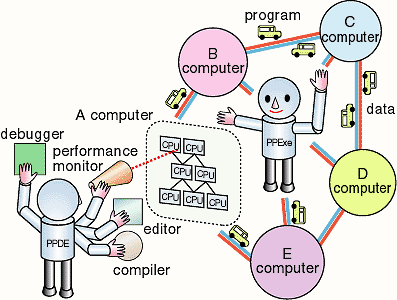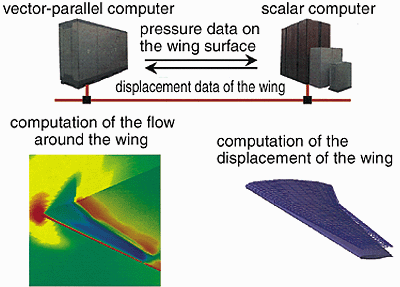Parallel computers and/or distributed computer systems are going
to play a leading part in the field of the computational science
and engineering. With new network computer systems including parallel
computers, however, it is considerably difficult to carry out
development, correction, improvement, and execution of programs
efficiently in comparison with conventional computer systems.
The reason is because the necessary tools for the above tasks
are not standardized, and common procedures to use the tools are
not established. This situation necessarily requires extremely
complicated operations to utilize the tools efficiently. In order
to overcome this difficulty we developed the "Seamless Thinking
Aid (STA)" system, which supports "seamless thinking" of programmers during the above processes necessary for the utilization
of parallel distributed computer systems (Fig. 11-1).
The STA system is composed of two parts. The first part is the
"Parallel Program Developing Environment (PPDE)" which is, so to speak, a kind of supporting system for developers
of parallel computation programs. In this environment all information
necessary for the development of a program is controlled automatically
by the system and a user can develop a program for parallel distributed
computer systems as easily as a personal computer without the
complicated procedure necessary in a conventional environment.
The second part of the STA system is the "Parallel Program Execution environment (PPExe)" in which a parallel computation program for a system composed
of different types of parallel computers can be executed efficiently
without manual operations. The function of the environment is,
so to speak, that of a control tower for the flows of data and
the behaviors of the program of the parallel distributed computations.
In this environment, for example, one can carry out efficiently
the comprehensive computation of a fluid-structure coupled system
composed of air and an airplane flying in the air, by combining
the results of calculations of the fluid flow and the airplane
structure carried out by the computers A and B, respectively (Fig.
11-2). |

